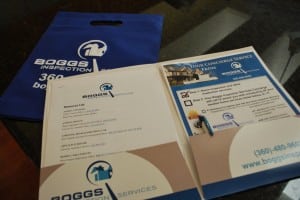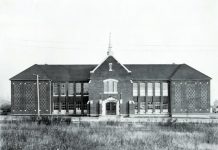From sloped floors to old gutters, first-time homebuyers have lots of questions when it comes to the condition of their new house. The number of repairs a home requires will ultimately determine its total value, which — if identified by an experienced home inspector in advance of the sale — can often save the homebuyer thousands of dollars off the final price of their home.
This is especially true for first-time homebuyers who may not know what to look for when examining the house that could soon be their home.
Costing around $400 to $500, the price of the home inspection may cause the homebuyer initial sticker shock, but the value the home inspection provides the buyer with is invaluable.

How do I know this? Because I experienced it firsthand earlier this year when shopping for my first home.
With a limited budget and a very specific list of “wants,” my husband and I looked at a dozen or so houses before finding one that we could envision ourselves calling home.
Because the home was older, it was obvious that it was going to need some TLC. Our own assessment of the house revealed that the kitchen and bathroom would need some repairs and that the roof would also need to be replaced. We were prepared for the worst and ready to know what a trained professional would find.
We scheduled our inspection with Dwayne Boggs of Boggs Inspection Services and met with him, our realtor and a few family members a couple days later for the inspection.
The inspection started with a brief overview of the process followed by a quick tour around the outside of the house. As we walked around the house, Dwayne would point things out like damaged gutters, then snap a photo that we could reference later.

Next we went inside where Dwayne thoroughly examined each room, taking notes and taking photos all along the way. He tested for things like water pressure and whether or not the appliances, like the oven and gas furnace, were in safe, operating condition.
It was Dwayne’s inspection of the attic and crawl space, however, that were the most revealing, as these were two parts of the house that my husband and I had not seen with our own eyes.
After the inspection, Dwayne provided a summary of his findings and offered us a chance to ask any questions that we had.
The following morning, I checked my email to find a detailed report of the inspection, complete with photos, waiting in my inbox. The report included detailed descriptions of every flaw discovered during the inspection.
Having this report to review the next day gave my husband and I a chance to revisit parts of the house we had more questions about. With a detailed description of all damages found and an accompanying photo, my husband and I had a great resource to refer to as we continued our home buying adventure.
A bit discouraged by how much work the house was going to need, my husband and I decided we still wanted to purchase the house under the condition that the seller would reduce the price. Using the inspection report as a tool, we were able to negotiate a lower sale price that would help cover the cost of some of the repairs.
The $400 inspection ended up saving us $7,000 at closing.
When buying a home, there are no customer reviews to help guide you in your purchase, and the “product” descriptions for most homes are fairly limited. Luckily, experienced home inspectors like Dwayne and his team at Boggs Inspection Services are able to provide in-depth home assessments, helping the buyer make an informed purchase.
If you are a first-time homebuyer, Dwayne says there are a few things to keep in mind when going through the home inspection process for the first time.
First and foremost, it’s important that you schedule your inspection with an experienced home inspector. “You don’t want the guy who’s been out there for six months,” he says. “Look at reviews online and get recommendations from friends.”

Second, you get what you pay for. “Don’t grab the cheapest inspector out there,” Dwayne adds. If $400 or $500 sounds like a lot of money, consider that a good, thorough inspection by an experienced home inspector could end up saving you thousands of dollars later on.
Finally, be prepared. Dwayne says the most common things that turn up during a home inspection are:
- Inadequate repairs
- Electrical issues
- Poor insulation
- Roof problems
Of those items, Dwayne says the most expensive item to repair or replace is the roof. And while moisture issues are not as common, if moisture damage is present, it will also cost you to repair.
With that in mind, Dwayne says major issues like the ones noted above shouldn’t necessarily be a deterrent from purchasing a home. “Anything can be fixed,” he says.
If you can work with the seller to help bring the cost of the house down or even make some of the repairs before closing, a leaky roof or old electrical panel may not be a deal breaker after all.

While state law does not require a homebuyer to schedule a home inspection in order to purchase a house, the home inspection is, in my opinion, the buyer’s best friend when it comes to making an informed and education purchase. Use your home inspection as a tool to help guide you in the home buying process. Who knows, it may end up saving you thousands of dollars.
Boggs Inspection Services provides home inspections in Thurston, Pierce and Lewis Counties. For more information or to schedule an inspection, call 360-480-9602 or visit Boggs Inspection Services online.
Sponsored











































